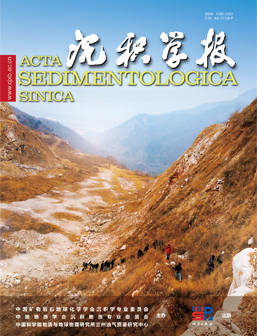Reservoir characteristics and controlling factors of marine sandstones of the Upper Cretaceous Donga Formation in the Trakes Slope, Termit Basin, Niger
doi: 10.14027/j.issn.1000-0550.2024.027
- Received Date: 2023-07-28
- Available Online: 2024-04-09
-
Key words:
- Upper Cretaceous /
- Donga Formation /
- Marine quartz sandstones /
- natural gamma-ray spectrometry /
- strike-slip faults /
- Trakes Slope /
- Termit Basin /
- West African Rift System
Abstract: Since 2019, CNPC has conducted exploration on the Upper Cretaceous Donga strata in the Trakes Slope of the Termit Basin, Niger. Several wells obtained industrial oil flows, demonstrating good exploration potential. Compared to the Paleogene fluvial-deltaic Sokor1 Formation, the detailed characteristics of the Upper Cretaceous marine sandstones of the Donga Formation have not yet investigated in detail. In the present study, based on seismic, wireline and mud logging data, 53 side wall cores and cutting samples from 4 wells were analyzed thin sections, casting thin sections, X-ray diffraction and scanning electron microscope, gamma-ray spectral logging, etc. This study investigate the reservoir characteristics of the DS1~DS3 members of Donga Formation, and analyze their controlling factors. The results show that rock types of DS1 member are fine-medium grained quartz sandstones with high component maturity, whereas that of DS3 member are fine grained lithic quartz sandstones with cements mainly of calcareous minerals. The quartz grains are sub-round to round with moderate to poor sorting. The matrix are mainly composed of kaolinite and calcites, and sandstones exhibit point and line contacts. The most common diagenetic process were compaction, cementation and dissolution, and compaction and cementation are obvious. The sandstones commonly experienced dissolution, and pore types are mainly intergranular pores with medium to ultra-low porosity and permeability. The high-quality reservoirs of the Donga Formation are mainly distributed in the DS1 member. Physical properties of sandstones become better from the west to east in Trakes Slope. The analysis results show that sandstones development in the Donga Formation is mainly controlled by three factors. Firstly, vertical distribution of sedimentary facies and sandstones were mainly controlled by sea level changes. The DS1 member, deposited in the early stage of marine transgression, mainly consists of distributary channel sandstones, whereas DS3 member, deposited during the highest sea level, is dominated by delta front sheet sandstones and distributary channel sandstones. The high salinity of sea water in this period resulted in high content of carbonate cement, and poor physical properties of reservoir rocks. Secondly, the stable gentle slope in the Late Cretaceous was favorable for the development of sand bodies, and the intense strike-slip fault activities in the Paleogene induced the formation of micro-fractures in reservoir rocks, effectively improving their physical properties. Thirdly, the rigid support of quartz sandstones was favorable for the preservation of primary pores, and the dissolution of unstable minerals such as feldspar and calcareous minerals improved the pore structure of reservoir rocks. The development of regional cap rocks of marine mudstones and shales is conducive for the formation of “self-generation and self-preservation” play in the Donga Formation. Compared with the low slope of the Trakes Slope, sandstones with better physical properties are well developed in the middle and high slope which are closer to the eastern provenance. They are favorable exploration areas for the Donga Formation.
| Citation: | Reservoir characteristics and controlling factors of marine sandstones of the Upper Cretaceous Donga Formation in the Trakes Slope, Termit Basin, Niger[J]. Acta Sedimentologica Sinica. doi: 10.14027/j.issn.1000-0550.2024.027 |






 DownLoad:
DownLoad: